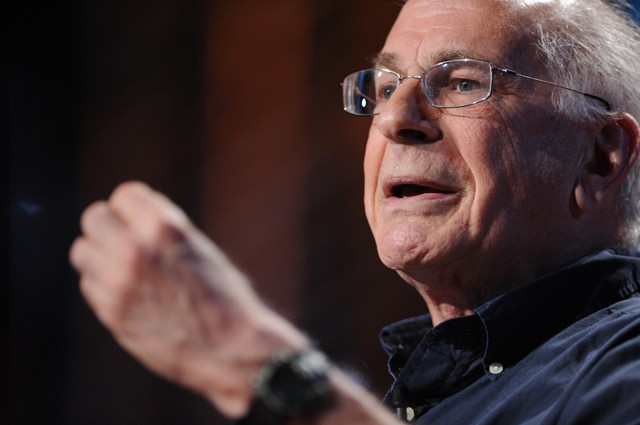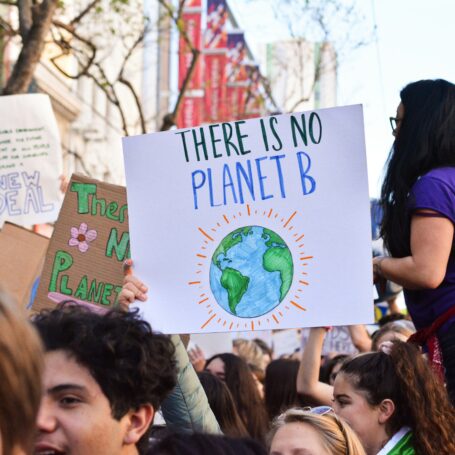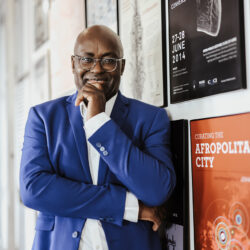Daniel Kahneman, 1934-2024: The Grandfather of Behavioral Economics
Nobel laureate Daniel Kahneman, whose psychological insights in both the academic and the public spheres revolutionized how we approach economics, has died at the age 90. His death was confirmed by family members who did not release details. but she did not release details.
At his death, Kahneman was professor of psychology and public affairs emeritus at the Princeton School of Public and International Affairs, Eugene Higgins Professor of Psychology Emeritus at Princeton University, and a fellow of the Center for Rationality at the Hebrew University in Jerusalem.
Although Kahneman was not an economist – and the first paragraph of his obituary in The New York Times notes that he never took an economics course – his work in psychology profoundly shifted the focus of economics from theorizing about rational entities making the best decisions based on the information they had to the understanding that people, in all their cognitive messiness and built-in assumptions, were the real subjects to be studied. In truth, his interest was in decision-making as a field, and his impact on economics was a by-product of Kahneman and his intellectual partner Amos Tversky desire to be recognized as scholars of decision-making.
As he told the Nobel Committee in a wide-ranging essay he wrote upon winning the 2002 prize in economic sciences, the pair’s groundbreaking paper on risky choices entailed its own academically risky choice:
That paper focused on a theory they were calling “value theory,” which by his own admission was a “truly significant advance.”
Renamed as “prospect theory” — again as a bit of marketing flair — that insight alone would have made a career. But while he and Tversky were fleshing out prospect theory’s prospects in the mid-1970s at Stanford University – Kahneman as a fellow at the Center for Advanced Study in Behavioral Science and Tversky as a visiting psychology professor – Kahneman started working with an actual economist, Richard Thaler on what was termed the “endowment effect” and “mental accounting.” Both concepts were building blocks of a burgeoning new field that would captivate policymakers, a field known as “behavioral economics.” (While at CASBS Kahneman would also meet cognitive psychologist Anne Treisman, who became his second wife in 1978. She died in 2018.)
Kahneman and Tversky’s impact was large, but he worked diligently to ensure that the proper people received credit (telling the Times, for example, that rather than ‘father’ of the field he was better described as the ‘grandfather’). Returning to his Nobel essay:
That again was sufficient for a Nobel, but as a third act Kahneman became a public intellectual with a best-selling 2011 book, Thinking Fast and Slow. Popularizing work that Kahneman had been doing over the years on things like loss aversion and heuristics, the book posited that people’s brains utilized two modes of thinking – fast and slow. It was pop science at its most glorious – readable, erudite and perhaps a bit too facile. But it cemented Kahneman’s role as perhaps the English-speaking world’s best-known living social scientist.
Daniel Kahneman was born on March 5, 1934, in Tel Aviv in what was then the British Mandate of Palestine. His family, Jews from Lithuania who had emigrated to Paris shortly after the creation of the Soviet Union, was visiting family in Palestine at the time, and young Daniel’s earliest years were spent in Paris. And he was in Paris in 1940 when Nazi Germany occupied the capital of a defeated France.
As Jews, Kaheman’s family lived in a precarious state, and his father was apprehended in the first round-up of French Jews but released six weeks thank to the intervention of his openly fascist employer. Nonetheless, the family remained in danger and escaped to Vichy France until the Germans took over that rump state and the family huddled in central France until the Allied invasion in 1944 (although Daniel’s father would die of diabetes six weeks before D-Day).
The family would emigrate to Palestine in 1948 and were present for the creation of the state on Israel. As a teenager in the new state, Kahneman decided he wanted to be a psychologist. “The questions that interested me in my teens were philosophical – the meaning of life, the existence of God, and the reasons not to misbehave,” he told the Nobel Committee. “But I was discovering that I was more interested in what made people believe in God than I was in whether God existed, and I was more curious about the origins of people’s peculiar convictions about right and wrong than I was about ethics. When I went for vocational guidance, psychology emerged as the top recommendation, with economics not too far behind.”
Having made that decision, he deferred his mandatory military service in the Israeli Defense Force until he finished his degree from Hebrew University in Jerusalem. When he did enter the military in 1954, Kehneman initially served as a platoon leader with the rank of second lieutenant before being transferred to the defense force’s psychology branch. There he noticed a disconnect between assessments of officer candidates made on an obstacle course and their actual performance. “I was so impressed by the complete lack of connection between the statistical information and the compelling experience of insight that I coined a term for it: ‘the illusion of validity.’ Almost 20 years later, this term made it into the technical literature. It was the first cognitive illusion I discovered.”
After serving his required two years, Kahneman returned to academe and received a fellowship to earn a PhD under Amitai Etzioni at the University of California, Berkeley. He had married educational psychologist Irah Kahn in Israel; they had two children together, Michael and Lenore, before later divorcing.
With his doctorate, he returned to Hebrew University and lectured in psychology for five years before spending his sabbatical at the University of Michigan. Back at Hebrew University, he asked his colleague Amos Tversky to tell his graduate seminar about decision-making.
It was the start of a “magical” collaboration that Kahneman would say enriched both his work and his life.
As he wrote in the Nobel essay:
Amos and I shared the wonder of together owning a goose that could lay golden eggs – a joint mind that was better than our separate minds. The statistical record confirms that our joint work was superior, or at least more influential, than the work we did individually.
The “dynamic duo,” as they had been dubbed, were working together at the Oregon Research Institute in 1971 doing “a considerable amount of research and writing on the availability heuristic, on the psychology of prediction, and on the phenomena of anchoring and overconfidence.” The synthesizing of their year in Oregon over the next here years produced a single journal article, but it was a big one. “Judgment under uncertainty: Heuristics and biases” was published in Science in 1974, and its revelations about how heuristics are deployed under uncertainty were widely read. “The Science article turned out to be a rarity: an empirical psychological article that (some) philosophers and (a few) economists could and did take seriously,” he wrote in the Nobel essay, adding later, “the article soon became a standard reference as an attack on the rational-agent model, and it spawned a large literature in cognitive science, philosophy, and psychology.”
As his star rose, Kahneman’s institutional postings included his professorship at Hebrew University until 1978, at the University of British Columbia from 1978 to 1986, and at Berkeley from 1986 until 1994. From there he took the split posts at Princeton and remained there until his death.
While at the University of British Columbia, Kahneman’s collaborations with Tversky tapered off – physical proximity had been a key driver of their successes – although they remained friends. Kahneman continued to collaborate broadly. His research on human biases continued apace, looking at how the perception of happiness affects satisfaction, how people recall utility, and the “focusing illusion” in which one factor seems the most dominant when in fact, many factors led to an outcome.
Following the success of Thinking Fast and Slow, Kahneman and co-authors Olivier Sibony and Cass Sunstein published Noise: A Flaw in Human Judgment in 2021.
He was a member of the National Academy of Science, the Philosophical Society, the American Academy of Arts and Sciences and a fellow of the American Psychological Association, the American Psychological Society, the Society of Experimental Psychologists, and the Econometric Society, as well at the Center for Advanced Study in Behavioral Science (CASBS) at Stanford.
In addition to the Nobel, he received several major prizes, including two awarded jointly with Tversky: the Distinguished Scientific Contribution Award of the American Psychological Association in 1982 and the Grawemeyer Prize in 2002. (The Nobel is not awarded posthumously and Tversky died in 1996). Kahneman was awarded the Warren Medal of the Society of Experimental Psychologists and the Hilgard Award for Career Contributions to General Psychology, both in 1995, the Lifetime Contribution Award of the American Psychological Association in 2007 , and the Presidential Medal of Freedom in 2013. In 2014, he received the second SAGE-CASBS Award; Sage is the parent of Social Science Space.



























































































